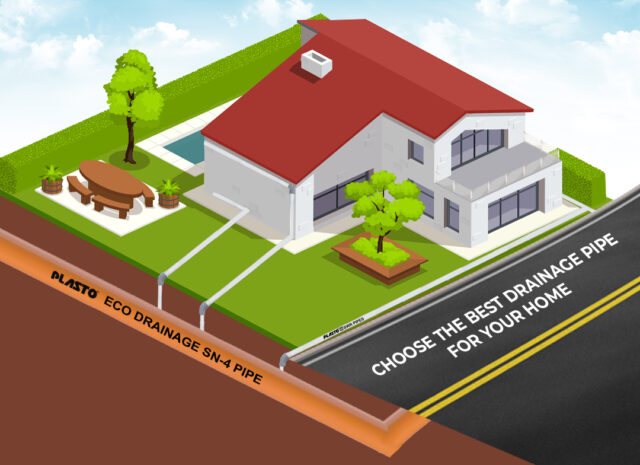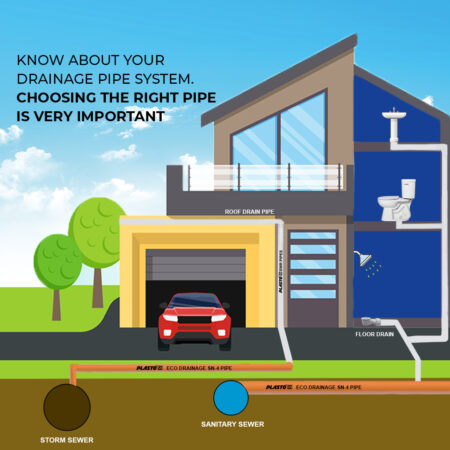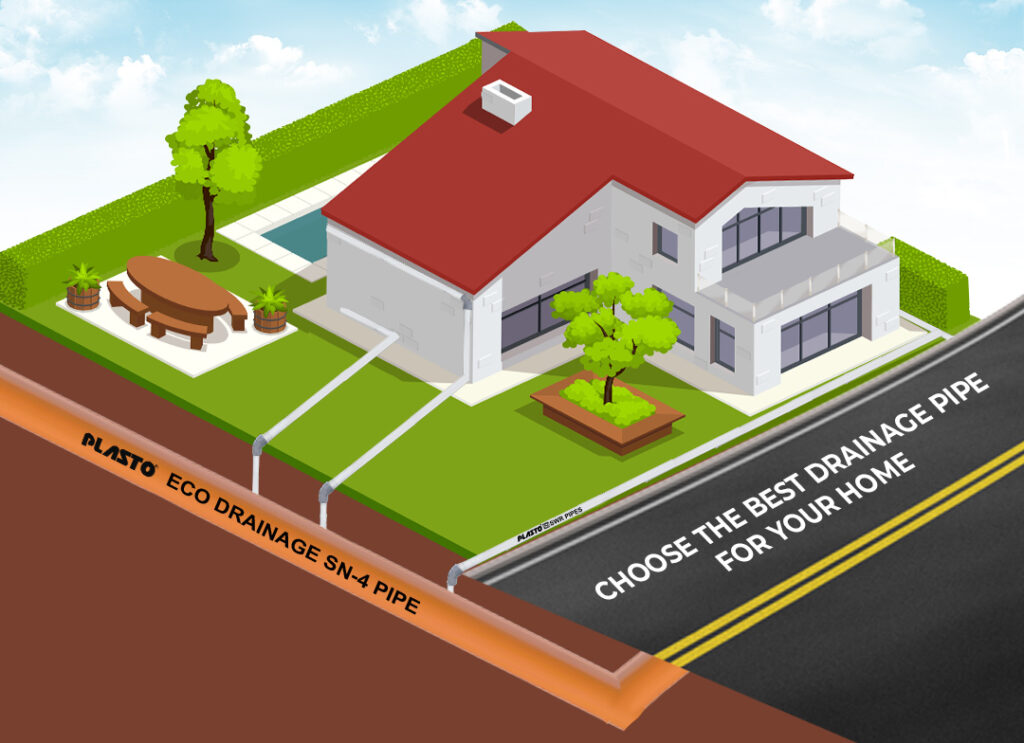How To Choose Best Drainage Pipe For Home And Industries
Introduction
Drain maintenance is one of the most important aspects of home maintenance. Drainage pipes are responsible for disposing of wastewater from our homes or industries. Furthermore, they prevent floods caused by swamp-like conditions and soil erosion. Thus due to its importance, it is helpful to know which type of drainage pipe is the best, how they can be identified and maintained, and when and if they should be repaired or replaced.
Different Types Of Drainage Pipes For Home
Various types of drainage pipes are used for different types of drainage problems. Contractors choose drainage pipes based on each project’s drainage system. The three main considerations for contractors when selecting drainage pipes are strength, size, and installation ease. Plastic drainage pipes are used almost universally for their resistance to cold and heat.
Today, PVC and polyethylene drainage pipes are the most commonly used drainage pipes. Additionally, various other pipes are used to control wastewater flow.

Corrugated Polyethylene Drainage Pipes
Corrugated drainage pipes are strong, durable, and economical drainage solutions. It is a highly corrosive and abrasion-resistant plastic that is chemically inert. The drainage pipes are well known for holding up to the toughest conditions. About 90% of drainage pipelines are made of corrugated polyethylene.
PVC Drainage Pipes
The low cost, high durability and easy assembly of polyvinyl chloride pipes make them popular in drainage systems. 75% of wastewater mains are made up of PVC pipes. Due to their strength, these pipes can withstand any pressure. They only require glue to join two parts, so they don’t require soldering or welding. PVC pipes have one drawback: they are rigid and cannot be bent into the desired shape.

Concrete Drainage Pipes
The most common use of concrete pipes is in the construction industry. Since it is locally available and low in cost, strong and durable, it is one of the most common drainage pipes. Besides being environmentally friendly, these pipes are also unflammable, which makes them popular.
Clay Drainage Pipes
Clay drainage pipes are more environmentally friendly and stronger than plastic. In spite of being strong and environmentally friendly, these pipes will crack over time due to extreme weather conditions and the waste water pressure. Today, the clay pipes are coated in concrete to make them rigid and more durable than before.
Cast Iron Drainage Pipes
Cast iron pipes are usually used in home sewage systems and are underground to allow waste water to flow through and reach the purification center for recycling purposes. Durability and toughness are known characteristics of these pipes. Municipalities use these pipes since they are simple to install and do not require maintenance. It is maintenance-free and will last for many decades.
Copper Drainage Pipes
Residential water and drainage lines once used copper pipes. However, these pipes have now been replaced with PVC or plastic, as copper has become quite costly and corrode over time. Furthermore, these pipelines cannot survive coldest temperatures and will likely burst if the water inside them freezes. Thus, they are rarely used in drainage systems nowadays.
Galvanized Drainage Pipes
Early in the 1900’s, galvanized pipes were widely used for drains. Their cost-effectiveness and accessibility made them popular. Soon, problems such as leakage, high maintenance, and discoloration took place, and plastic or PVC pipes were used instead. In current times, it is very rare to see these pipes used for drainage.
The characteristics of each type of drainage pipe are different. Finding the right type of drainage pipe can be challenging. For this reason, you should consult a professional before purchasing a drainage pipe.
You can rely on Plasto for a durable, smooth-functioning of all kinds of drainage and plumbing system.


